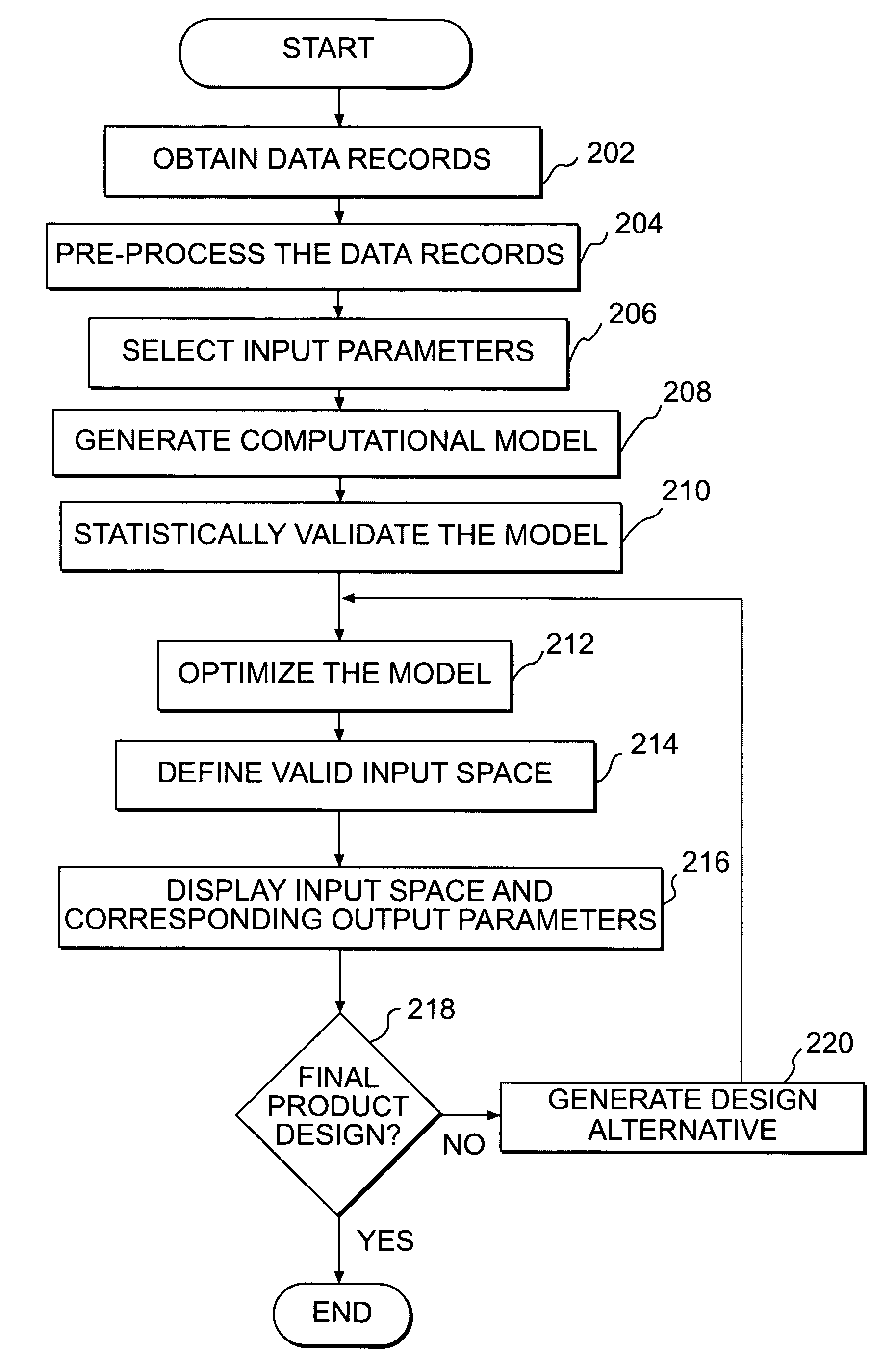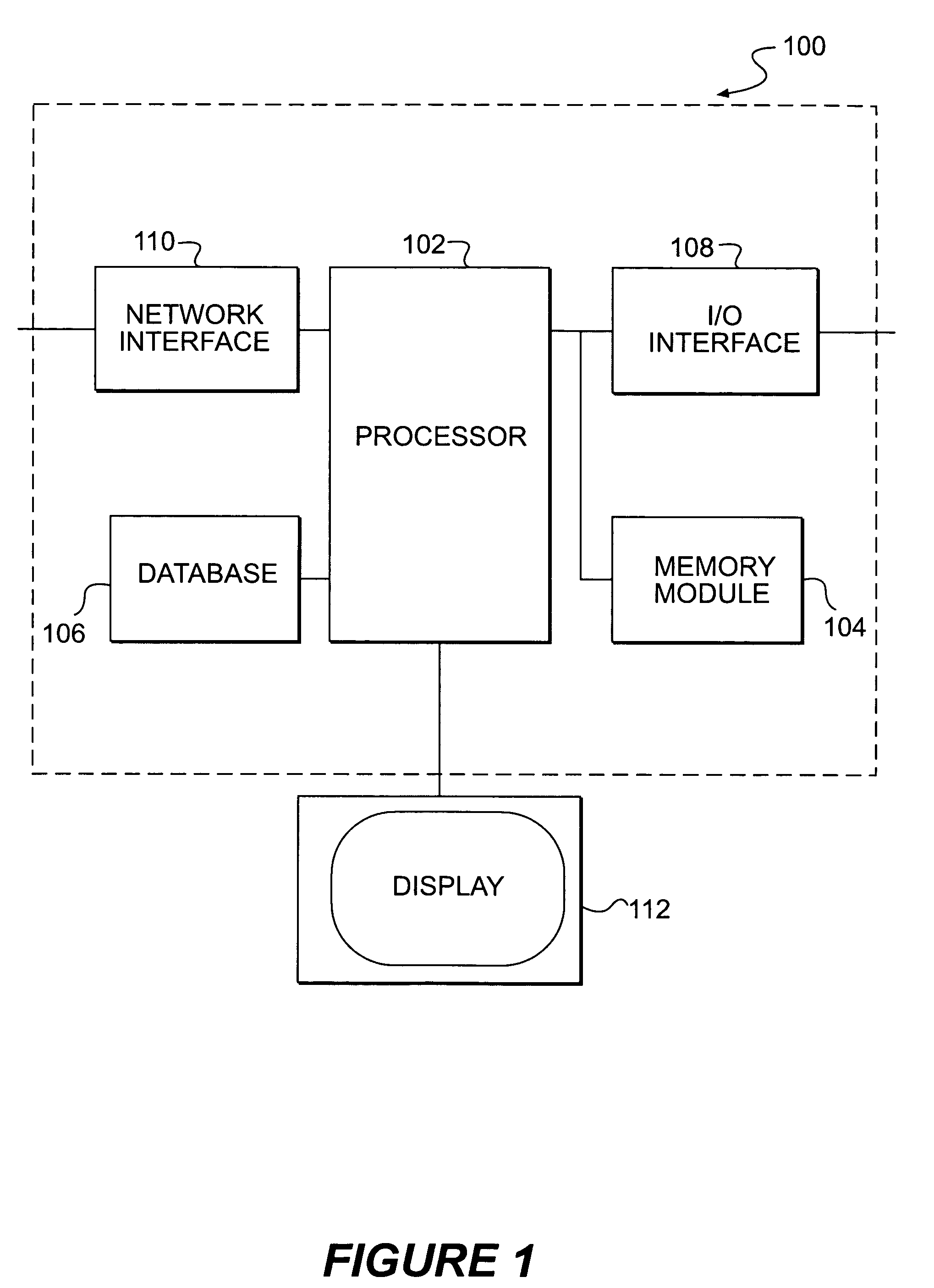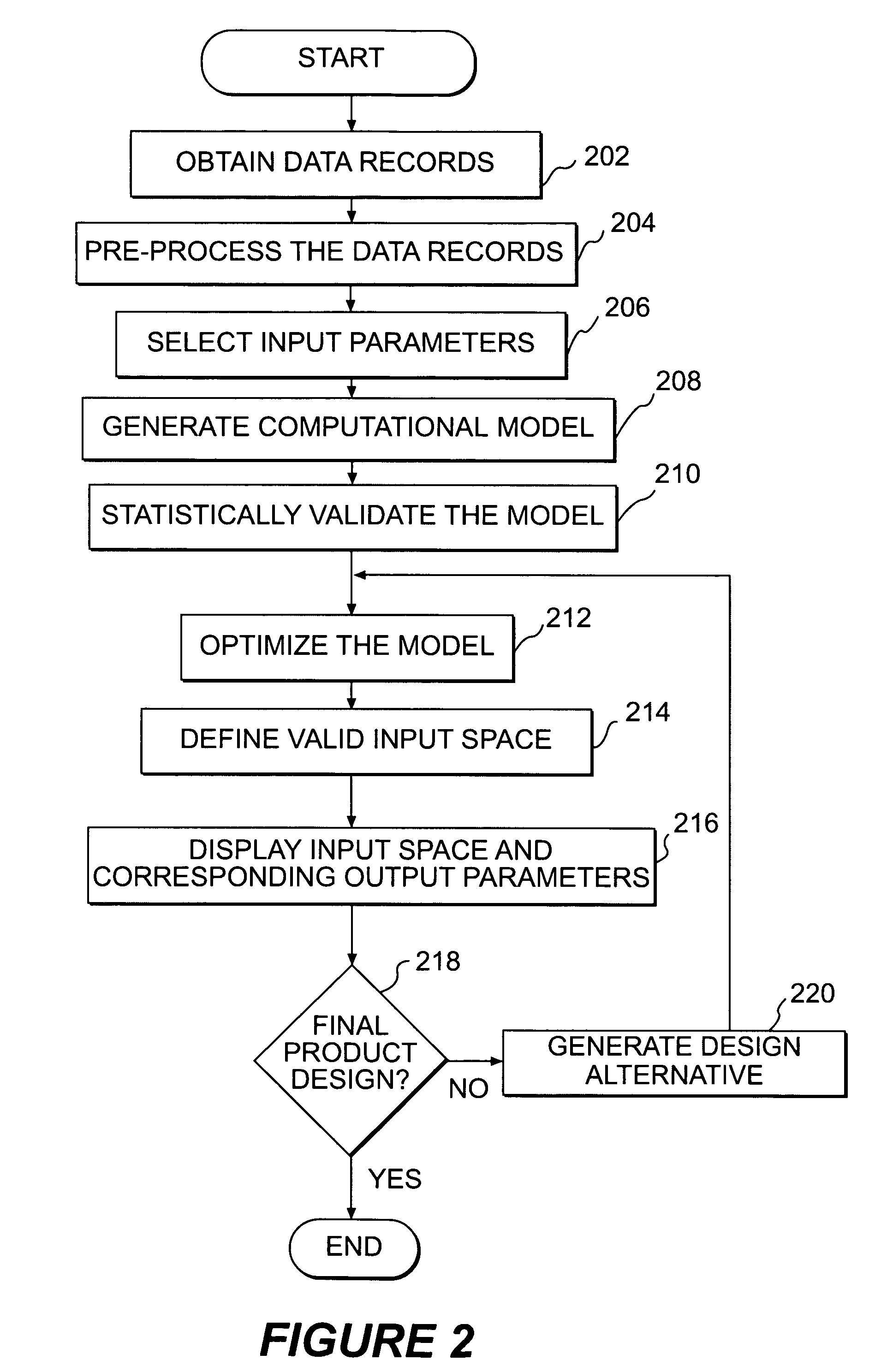Probabilistic modeling system for product design
a modeling system and product technology, applied in the field of product design systems, can solve the problems of inability of engineers to optimize their designs according to competing requirements, inability to understand the relationship between input parameters and variation in the system model, and inability to optimize the design according to competing requirements
- Summary
- Abstract
- Description
- Claims
- Application Information
AI Technical Summary
Benefits of technology
Problems solved by technology
Method used
Image
Examples
Embodiment Construction
[0014] Reference will now be made in detail to exemplary embodiments, which are illustrated in the accompanying drawings. Wherever possible, the same reference numbers will be used throughout the drawings to refer to the same or like parts.
[0015]FIG. 1 provides a block diagram representation of a product design system 100 for generating a design of a product. A product may refer to any entity that includes at least one part or component. A product may also refer to multiple parts assembled together to form an assembly. Non-limiting examples of products include work machines, engines, automobiles, aircraft, boats, appliances, electronics, and any sub-components, sub-assemblies, or parts thereof.
[0016] A product design may be represented as a set of one or more input parameter values. These parameters may correspond to dimensions, tolerances, moments of inertia, mass, material selections, or any other characteristic affecting one or more properties of the product. The disclosed prod...
PUM
 Login to View More
Login to View More Abstract
Description
Claims
Application Information
 Login to View More
Login to View More - R&D
- Intellectual Property
- Life Sciences
- Materials
- Tech Scout
- Unparalleled Data Quality
- Higher Quality Content
- 60% Fewer Hallucinations
Browse by: Latest US Patents, China's latest patents, Technical Efficacy Thesaurus, Application Domain, Technology Topic, Popular Technical Reports.
© 2025 PatSnap. All rights reserved.Legal|Privacy policy|Modern Slavery Act Transparency Statement|Sitemap|About US| Contact US: help@patsnap.com



